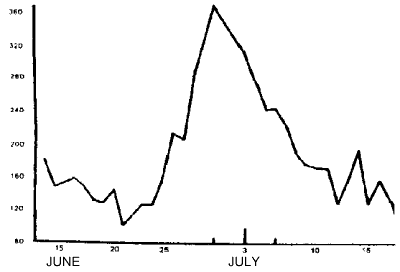 |
Science Frontiers ONLINE No. 108: Nov-Dec 1996 |
|
|
Sunspots And Planetary Alignments
Many scientists and laymen have noticed that the sunspot cycle and Jupiter's period are both about 11 years. This must be a coincidence, because the tidal forces exerted on the sun by distant Jupiter seem far too weak to disturb the sun's internal operations. (See details in ASO9 in The Sun and Solar System Debris.)
Could it be that we are missing something, for there is some evidence that some planetary alignments also exert influence on the number of spots seen on the sun's face?
In particular, the Uranus-Neptuneearth conjunction has been investigated by B. Payne, who wrote the following in Cycles:
"Sunspots increase when two or more planets line up, an effect I have observed for more than a decade. During the last six years, Uranus and Neptune have been within a few degrees of each other. Their conjunction, which occurs every 137 years, is an ideal situation to validate the hypothesis that sunspot numbers are associated with planetary positions."
Payne's lengthy analysis is omitted, but the essence of his study can be seen in the accompanying graph. He concludes:
"The results clearly show that sunspot numbers increase markedly during Uranus-Neptune-Earth-sun alignments."
(Payne, Buryl; "Sunspot Number Changes during Planetary Alignments," Cycles, 45:146, 1995)
Comment. It will take a lot more than one such conjunction to convince the scientific community that the mere lining up of comparatively tiny planets can have any effect on those huge storms we call sunspots!
Reference. The Catalog: The Sun and Solar System Debris, mentioned above, is described more fully at here.
 | Sunspot numbers during the 1990 conjunctions of Earth-Uranus (June 30) and Earth-Neptune (July 6). |